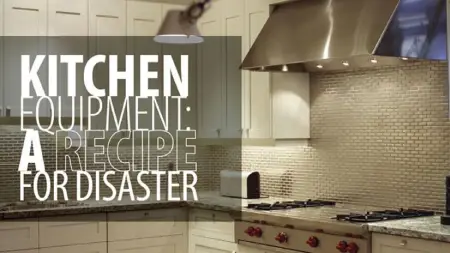
Kitchen equipment poses significant fire and safety risks if not properly maintained. Rainbow Restoration highlights key prevention strategies.
|
Cooking is often considered a relaxing, rewarding task. After all, food brings people together. But did you know that 49% of reported home structure fires started from cooking? Between 2014 and 2018, an average of 550 people died in house fires started by cooking activities.
The kitchen has become a very important gathering place for families, and it is important to be aware of the hazards that can endanger you and your family. Fortunately, with a little know-how and some extra caution, you can prevent a recipe for disaster.
The Range Hood and Filter
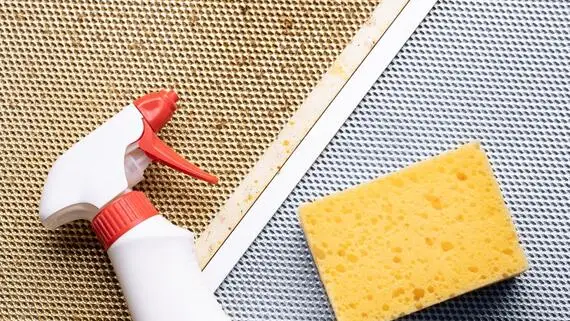
Hoods and hood filters in commercial applications are required to be cleaned regularly for safety reasons. After years of use, even residential range hoods and filters can accumulate enough grease to start a fire. Clean the underside of the hood often and follow the manufacturer’s instructions for changing the filter.
Unattended Cooking
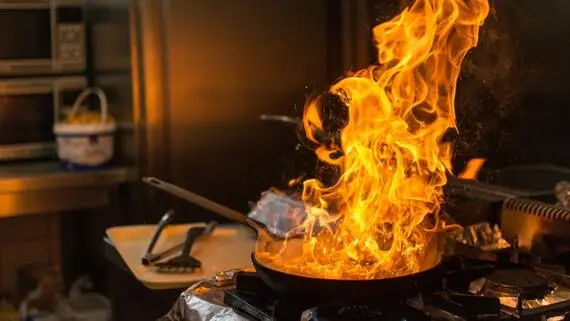
Leaving appliances unattended while on a high heat is a major cause of kitchen fires. Two-thirds of home cooking fires result from grease or food igniting, which is likely to occur if you leave the stove unattended. If you have to answer the& door& or pick up the phone in another room, turn down the heat to prevent potentially deadly kitchen hazards.
Lack of a Fire Extinguisher
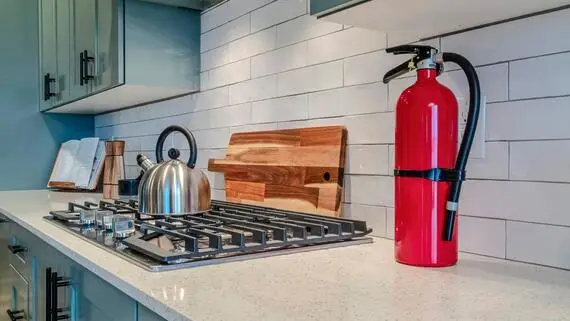
Do you keep a fire extinguisher in the kitchen? Does everyone in your family know how to use a fire extinguisher? In most homes, the answer to at least one of these questions is no. If you don’t already have one, purchase an ABC multipurpose fire extinguisher capable of putting out Class A (ordinary), Class B (flammable liquids) and Class C (electrical) fires.
Overloaded Circuits

Faulty wiring, including overloaded circuits, accounts for 33% of& home fires. In older homes with fewer outlets, it’s common to use extension cords or power strips to increase the number of outlets. Because cooking appliances produce a lot of heat, they consume a large amount of power. Never plug any kitchen appliance into an old power strip or extension cord that might not be able to handle the watt requirement.
Radon Gas
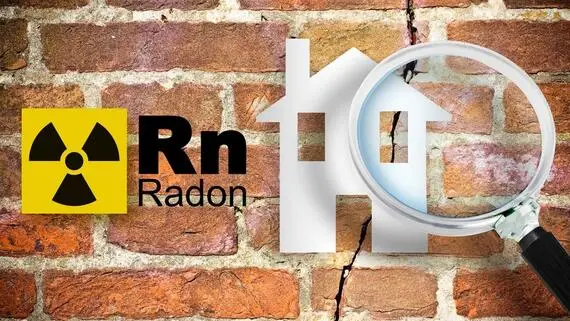
What does this lung cancer-causing, radioactive gas – which is generated in the rock soil under your home – have to do with your kitchen? In addition to its presence in the soil, radon can be found in water. You are especially at risk if you get your water from a well. The gas is released into the air when the water is agitated, such as when washing dishes.
High levels of radon gas have also been found in some granite countertops. Unsafe levels are undetectable to the human senses, so you need a radon testing kit to find out if you’re at risk. It’s worth testing your indoor air to ensure you and your& family are& not at risk.
Carbon Monoxide

This is another harmful gas you can’t perceive without a carbon monoxide detector. The gas emits from any combustion appliance, but with proper venting, the emissions usually exhaust harmlessly outside. However, if you have a mis adjusted gas stove, carbon monoxide could be one of the most serious kitchen hazards you deal with on a daily basis.
To make sure your stove is operating properly, have your range and oven inspected annually by a qualified technician. Then, never use the stove to heat your home since prolonged operation could be dangerous.
Mold
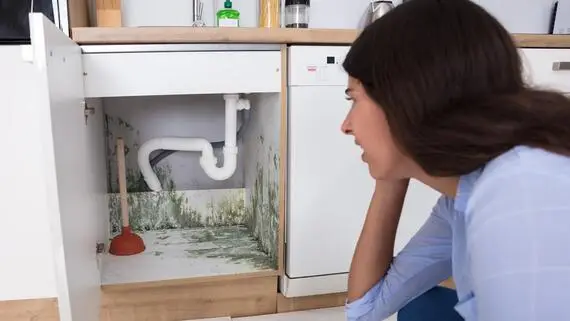
Because spores can create mold colonies anywhere there is warmth, moisture and organic material, the kitchen is especially ripe for mold growth. Under-sink plumbing leaks, a steamy dishwasher, a dirty sponge, pools of water in the sink – they all harbor mold growth.
If you have a mold problem, consider& professional residential mold removal and remediation& for large areas. To prevent the problem from returning, fix leaks, run a dehumidifier, and operate the hood exhaust fan when cooking and running the dishwasher.
Your family’s safety depends largely on how you handle these kitchen hazards. For more information about protecting your family and property, please contact your local& Rainbow Restoration®. We offer mold, fire and other remediation services following traumatic events to restore your home to its prior state.
Other Related Blog Posts:
5 Ways to Conserve Water in the Kitchen
Indoor Air Quality Restoration with These 5 Plants
Understanding the Classes & Choosing the Right Fire Extinguisher
